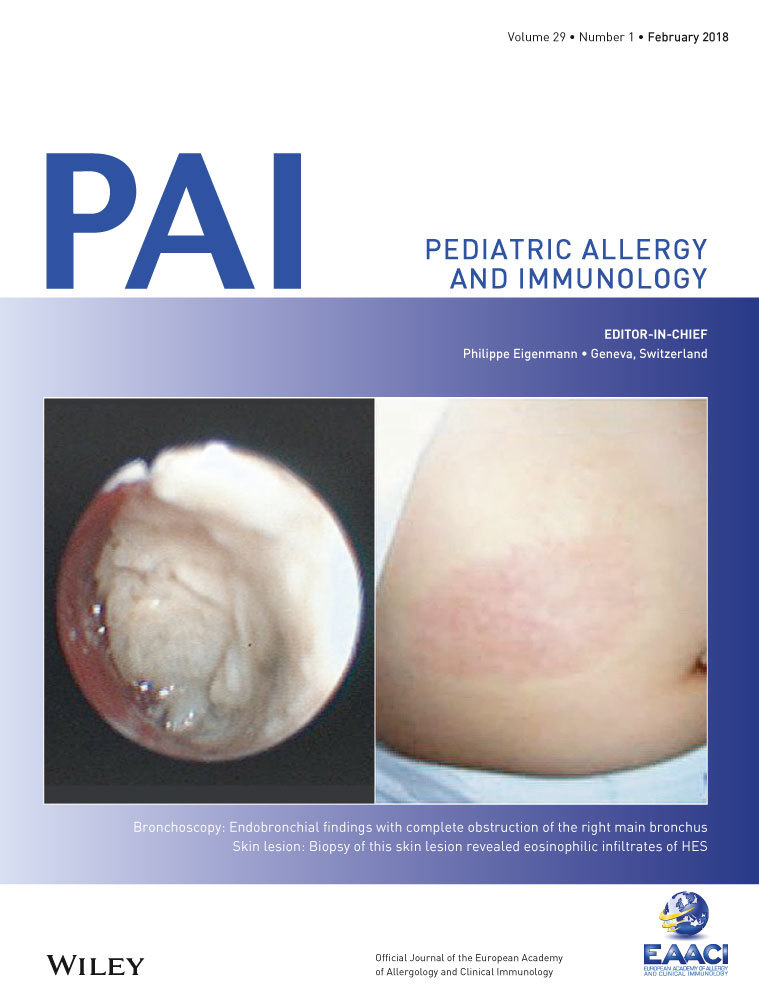Non-immediate-reading skin tests and prolonged challenges in non-immediate hypersensitivity to beta-lactams in children
Abstract
Background
A minority of children reporting non-immediate reactions to beta-lactams (BLs) are allergic. Allergy workup usually includes late-reading (48-72 hours) skin tests (ST) and short (1-3 days) drug provocation tests (DPT), regardless of the chronology of the index reaction. The sensitivity of hyper-late-reading (≥6-7 days) ST and of prolonged DPT for the diagnosis of non-immediate hypersensitivity to BLs is yet to be determined.
Objectives
To establish the diagnostic values of late-reading ST and hyper-late-reading ST and of prolonged DPT in children reporting non-immediate reactions to BLs.
Methods
Prospective assessment of children reporting non-immediate reactions to BLs with late- and additional hyper-late-reading intradermal (ID) and patch tests, and if negative, with prolonged DPT.
Results
Five hundred and fifty children reporting reactions to a single or several BLs (674 suspected BLs) were included. Non-immediate hypersensitivity to BLs was diagnosed in 63 children (11.5%), reporting 66 reactions (9.8%), based on responses in ST (n = 17, 25.8%: 5 to ID, 8 to patch tests, and 4 to both tests), DPT (n = 43, 65.2%), and clinical history (n = 6, 9.1%), including 3/9 children with severe cutaneous adverse reactions. Skin test positivity was observed after the 6-7th day in 14/17 children, and DPT positivity after a median time of 3 days. No severe reaction was observed after ST or during prolonged DPT.
Conclusion
Additional hyper-late-reading of ST enhanced their positivity. However, their overall sensitivity remained weak, especially in non-severe cases. Prolonged DPT are safe and may improve the performance of DPT in the diagnosis of non-immediate hypersensitivity to BLs.




